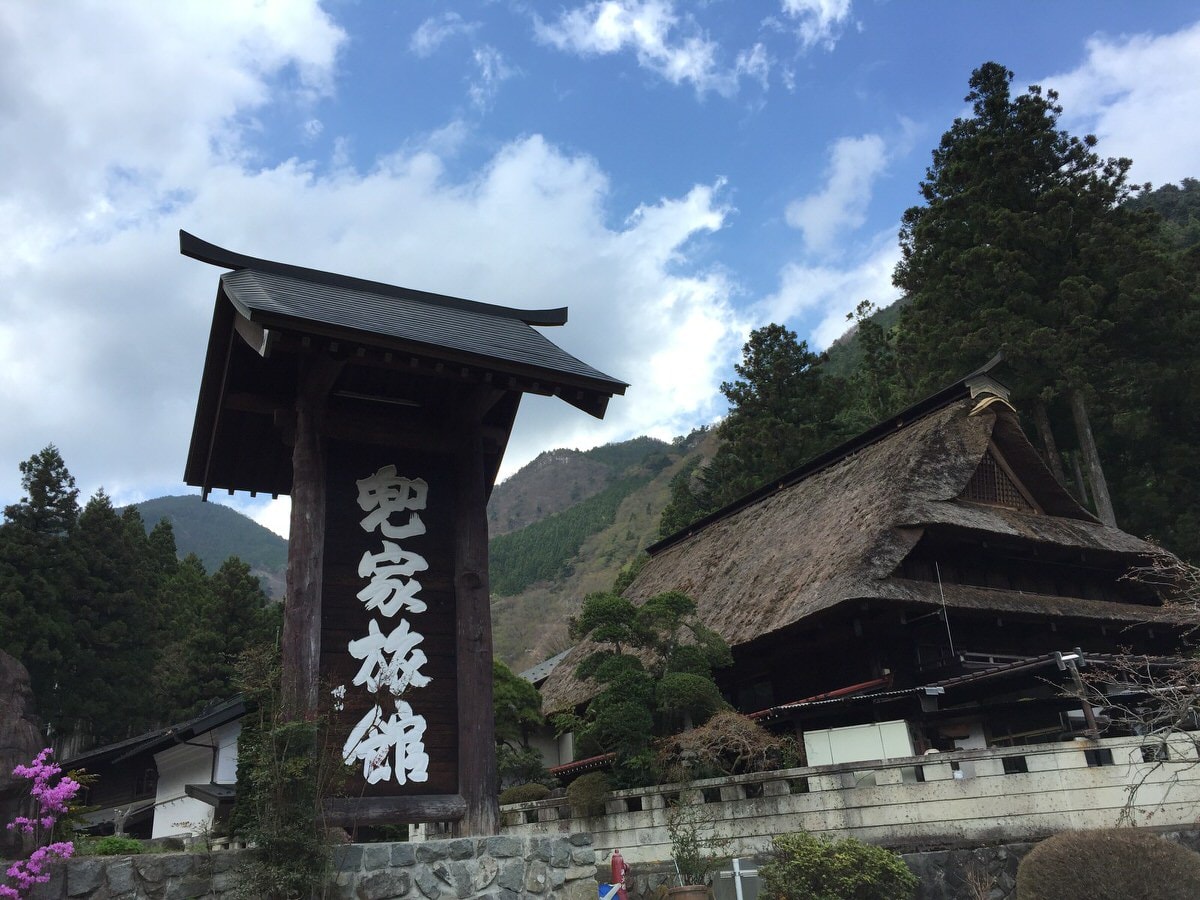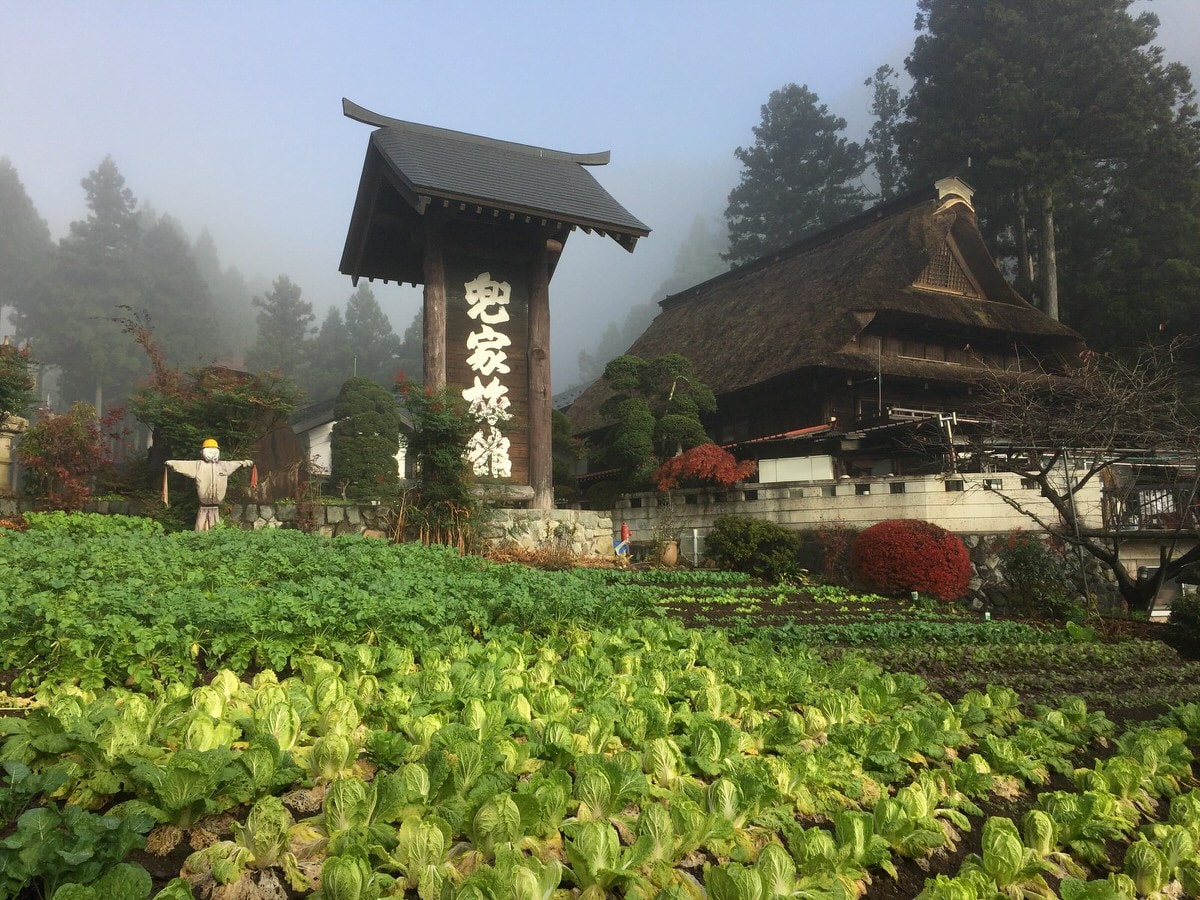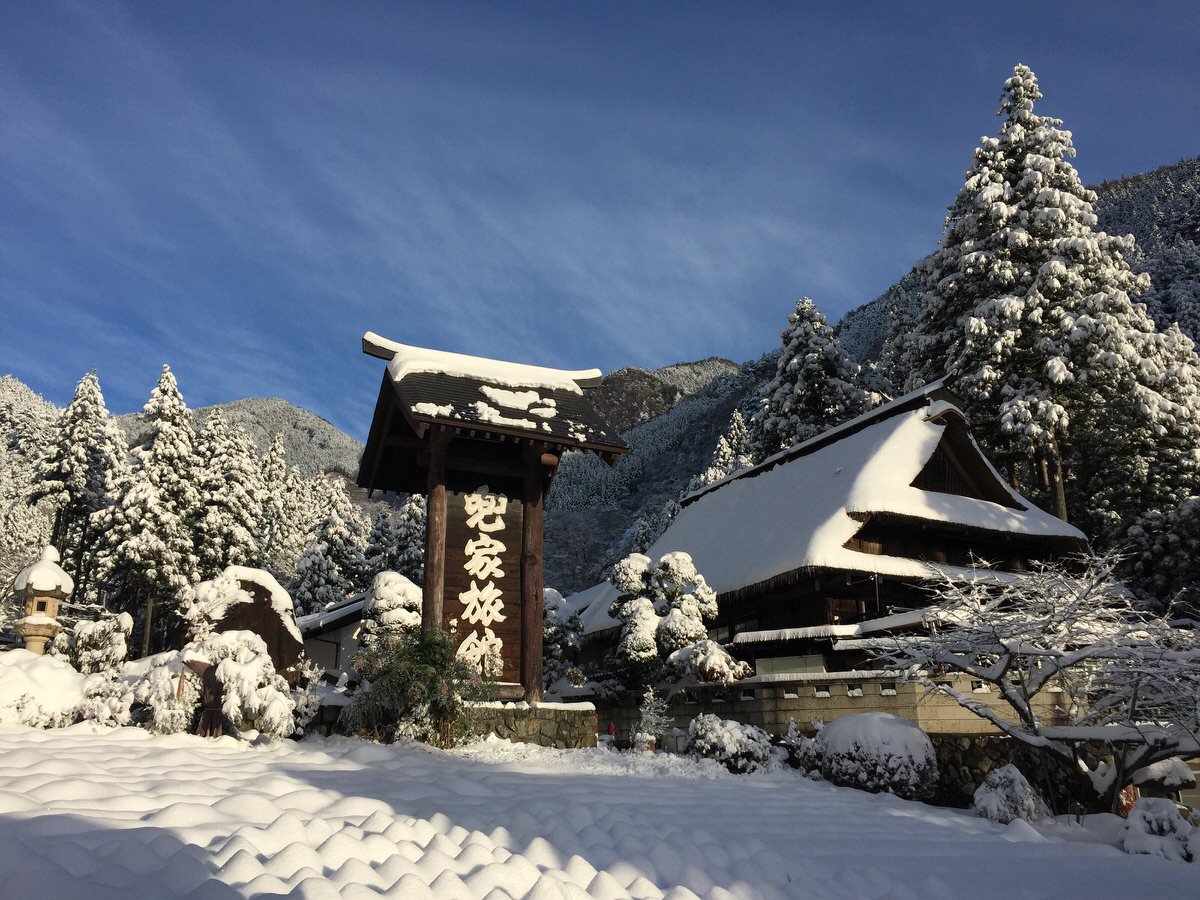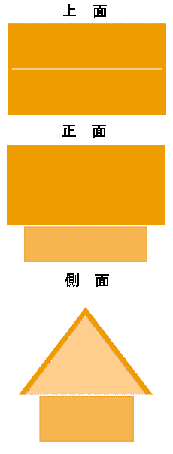| A building with a gassho-zukuri roof. |
| 【Tokyo Tokyo Promotion Video】EDO CULTURE(DAY) |
| A supreme moment |
Spring

|
Summer

|
Autumn

|
Winter

|
|
Many rural houses in Kazuma have gassho-zukuri-style thatched roofs, resembling helmets, which are also known as kabuto-zukuri and boast a history of 400 years. Formally referred to as "Fuji-style gassho," their majestic thatched roofs silently convey to Japanese people the nostalgic feeling of home. The Fuji-style gassho-zukuri architecture is mainly found in the Fuji volcanic zone. In particular, the reason why it is widely distributed in Yamanashi Prefecture is due to the active trade and cultural exchange between Yamanashi (Kai) Province, Tokyo, and the surrounding areas, utilizing the mountain road connecting Soba (Tokyo) and Yamanashi since the Edo period. The interior is divided into four layers, with the first and second floors serving as regular rooms, and the third and fourth floors as attic space. The attic space was used for sericulture until after World War II, with up to seven layers of partitions in place during silkworm breeding season. This building is constructed with a technique that uses minimal nails and utilizes the joining of wood to wood. The thickness of the roof ranges from 60 centimeters at its thinnest point to 120 centimeters at its thickest. The thatched roof is known for being cool in summer and warm in winter. Thatching roofs with kaya grass became difficult due to the scarcity of kaya grass and the rising cost of rethatching. Prior to the war, most houses in Soba were built using the gassho-zukuri style, but now only four full gassho-zukuri houses remain. Surrounded by mountains, the temperature in this area is nearly 6 degrees lower than in the city center, and even in summer, the early morning can feel cold. Houses built in the gassho-zukuri style also do not feel the oppressive heat of the rainy season. In the far west of Tokyo, one can feel nostalgic in the heart of the people during the unbearably hot summers... In winter, one can sit under the kotatsu, breathe in the mountain air, and embark on a solitary journey... In early summer, the fresh greenery and thatched roofs shimmer... In the late autumn, with the mountains ablaze in red leaves, if you tread lightly on the mountain path and look down from the pass, you will see the nostalgic gassho-zukuri houses... They offer a taste of various mountain vegetables throughout the changing seasons. The gassho-zukuri buildings stand as a legacy of the wisdom of our ancestors, tucked away in a deep mountain village that seems far removed from Tokyo. It's worth taking a moment to reflect on such things while gazing at the majestic pillars and beams. Additionally, gathering around the hearth to share enjoyable conversations is also one of the pleasures to be had. Gassho-zukuri is a construction method where the components of the roof framework are assembled in a triangular shape resembling a "gassho" gesture, and the main house is built beneath it in the mountain shape. Irimoya-zukuri is a style of roof construction where the upper side is hipped and the lower side has a normal slope. It is a representative architectural style in China and Japan. |
Illustration of a gassho-zukuri-style house |
Illustration of kabuto-zukuri architecture.
|